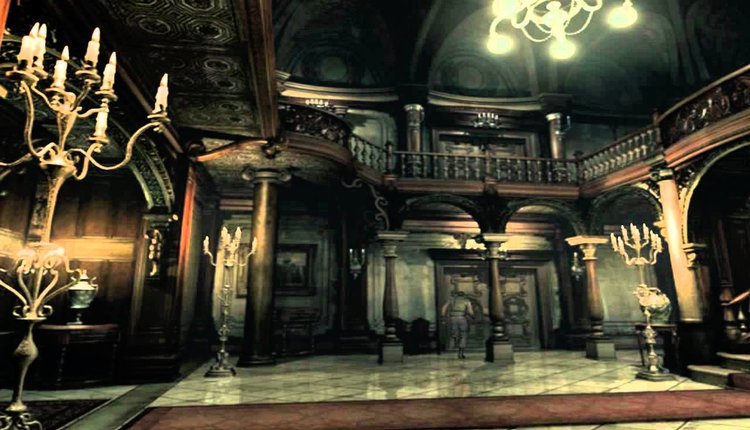Nightmares Now and Forever | Resident Evil at 20
It’s hard to find retro or vintage games to play as they were meant to be played anymore. Especially the games that proved popular enough to warrant a remaster. Remastering games seems like it’s only come into vogue recently especially now that more people are playing games than ever before but the remaster is old hat these days. One of the first games to get this treatment multiple times was the original Resident Evil. Remastered for PS1, Game Cube, PS2, Xbox and the current generation of consoles the game has been upgraded graphically as time has gone by but the mechanics, story and cheesy horror has remained mostly intact.
The story begins as a riff on classic Gothic mansion and mad scientist stories. A specialist team from the nearby Raccoon City Police Department, known as S.T.A.R.S (Special Tactics And Rescue Service), made up of Chris Redfield, Jill Valentine, Barry Burton and several other grunts all led by Captain Albert Wesker are investigating the disappearance of their colleagues near the secluded Spencer Mansion. After being attacked by mutated dogs Chris, Jill and Wesker are separated and must explore the mansion to escape and complete their mission.
Resident Evil was released in 1996 but was set in 1998 which was when the Director’s Cut was released hence why it’s twenty years old. I don’t really need an excuse to write about Resident Evil but it’s handy to have it here. After two decades and the gradual evolution of survival horror in that time the original Resident Evil is no longer that scary. If you play narrative driven games or like horror movies then chances are you’ve heard of this titanic franchise. It’s influence has been felt echoing down through the likes of its adaptations and quasi-remakes such as Resident Evil VII and The Evil Within. Despite this evolution and echo effect Resident Evil still manages to pull the rug out from under players from time to time.
The hallway seemed pretty innocuous at first. It probably would have remained that way too, had those damned dogs not burst through the window, their eyes white and their fur a mangy, bloody mess.
The room was a disaster but that was to be expected in a zombie-infested mansion right? Still the diary on the bed seemed worth reading until, page by page, the dread rose from deep in Chris and the closet door began to rattle.
She’d come to the storage room in the east wing hoping to find that first aid spray she’d stored here earlier. She could hear the thing’s claws on the other side of the door, could smell the carrion stink of it. She was painfully aware of her bleeding arm and how light the clip in her pistol was. She would have to aim carefully…
[perfectpullquote align=”full” bordertop=”false” cite=”” link=”” color=”#70006C” class=”” size=”19"]”It’s a game designed to be played in a dark room in an empty house at night.”[/[/perfectpullquote]p>
These are just a few vignettes from Resident Evil. The first two are scripted while the third only happens in states of desperation. The characters of Resident Evil move slowly but so do the enemies. Often the pithy little handgun that is the main weapon of the player character – either Chris or Jill – takes several shots to put down the zombies and the stronger monsters that arrive later. While Jill or Chris is plugging away the monsters keep moving until they either go down or they chow down. For skilled players who could master the arbitrary aiming system and could keep a clear head Resident Evil was a tactical game. For many others, like myself, it was a race for survival slowed down to a crawl.
As players progressed through the gloomily lit halls of the Spencer mansion the list of questions only grew. Doors that seemed impossible to open revealed themselves through intense and provoking puzzles that would give Dr. Kawashima a run for his money. Discovering that there was a great deal more to explore outside of the main mansion including a graveyard, insect-ridden guest house and a shark infested lab kept the game interesting in a macabre sort of way.

The macabre defined Resident Evil although as the games went on they leaned further into body horror and a kind of goofy B-movie sensibility that lead to the series nearly collapsing under its own weight. The most iconic images come from the first Resident Evil. The brutal rendering of that first zombie, the catching of breath in a safe room sound-tracked by that eerie composition and that final barbaric encounter with Tyrant. What Resident Evil lacks in scares it makes up for with atmosphere. The music in the game is truly one of a kind (I’ve never heard Moonlight Sonata the same way since) and I dare you to find a series of games with save room themes as good as the Resident Evil series. Scattered diaries and notes tell of the construction of the labyrinthine Spencer Mansion and of those that lived and inevitably died within its walls. The unease builds and builds and is punctuated by brief encounters with Chris or Jill’s squad mates as well as the enigmatic Wesker. The all-encompassing isolation and loneliness of Resident Evil compounds that unease into a dread that is almost palpable. It’s a game designed to be played in a dark room in an empty house at night.
Resident Evil defined survival horror and that term has grown and mutated into the run-and-hide simulators like Outlast and Amnesia: The Dark Descent we’ve seen recently. These games pale in comparison to Resident Evil. Capcom’s franchise gave you the chance to fight back and that application of tension and release never allayed my fears because the fear always came back regardless of how many handgun bullets I put into it.

